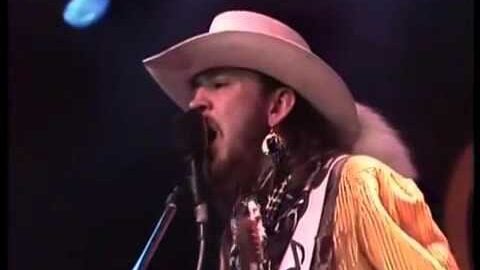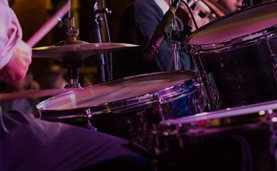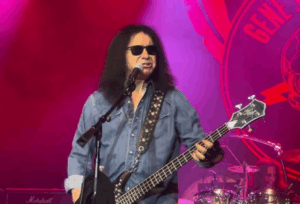12 Guitar Solos That Changed Rock Forever

via AquaTrunk Radio / youtube
It’s rare to hear a guitar solo that really lingers in your mind. It grabs your attention in a way that words can’t. The guitar sounds like it’s talking, telling a narrative, being angry, or being happy. A great solo can make your heart race, give you chills, or even make you feel like you have a lump in your throat. It’s not only about how quickly you can play or how excellent you are at technical things; it’s also about how you feel. Some solos hit you like bombs, full of wrath and power. Others build up gently, letting each note soak in with meaning and feeling.
Some solos have changed how people think about and see rock music over time, not just made songs stick in their brains. They’ve inspired generations of musicians to play guitars, shown fans how much emotion an instrument can convey, and reminded everyone why rock has such a particular beat. The solos show the time they were formed and the personality of the guitarist who made them. For example, the sound of the late 1960s was fiery and experimental, while the sound of the 1980s was lyrical and expressive.
This collection is a tribute to twelve guitar solos that not only amazed people but also influenced history. There is a voice in every bend, slide, and note that the guitarist plays. Some are brave and daring, while others are tender and hurting. But they all have that certain something that keeps people coming back.
These solos prove that the guitar is one of rock’s best storytellers, whether you play music seriously, are a casual fan, or just adore great rock music.
1. Jimi Hendrix – “All Along the Watchtower” (1968)
When Jimi Hendrix got his hands on Bob Dylan’s “All Along the Watchtower,” he didn’t just play it; he changed it. What started out as a simple folk song turned into a psychedelic thunderstorm of sound. Hendrix’s skill with tone, phrasing, and passion made the electric guitar into something completely new: a voice that could scream, cry, and soar all at the same time. Every bend and vibration seemed real, alive, and raw. Not only was it a solo, but it also changed how rock guitar could show pure emotion.
2. Jimmy Page – “Stairway to Heaven” (Led Zeppelin, 1971)
Jimmy Page’s solo in “Stairway to Heaven” is one of the most analyzed, copied, and praised solos of all time. The patient build-up makes it unforgettable—it’s a solo that starts as a whisper and ends as a storm. Page’s phrasing is intentional and musical, and every note hits its mark. It’s not about how fast it goes; it’s about conveying a tale, like how the song goes from quiet to mayhem. What happened? A solo so famous that any kid who picked up a guitar at a music store had to learn it.
3. Eric Clapton – “Crossroads” (Cream, 1968)
Eric Clapton put the blues on fire at the Fillmore. His solo on “Crossroads” showed that genuine emotion and perfect skill could go hand in one. Clapton’s sound was based on clarity and intensity, not flash. He mixed blues tradition with rock aggression. It felt like he was talking to his guitar with every run of notes. It was intense, emotional, and raw. This performance didn’t simply make Clapton a “guitar god”; it also made it possible for a new generation of blues-rock performers to find that right balance of soul and talent.
4. Eddie Van Halen – “Eruption” (Van Halen, 1978)
“Eruption” wasn’t simply a solo; it was a blast. Eddie Van Halen broke every rule guitarists believed they knew in just over a minute and a half. His two-handed tapping, fast hammer-ons, and screeching harmonics seemed like they came from another world. But it wasn’t only his skill that revolutionized rock music forever; it was his imagination. He made the guitar sound like something from the future that was joyful and scary. After “Eruption,” every guitarist wanted to play faster, louder, and with greater style.
5. David Gilmour – “Comfortably Numb” (Pink Floyd, 1979)
If Hendrix was chaos and Page was mystery, David Gilmour was all about feeling. His solos in “Comfortably Numb” teach you how to hold back; every note hurts with feeling. Gilmour didn’t chase speed; he chased spirit. His silky bends and melodic phrasing made something hauntingly beautiful, the kind of solo that hits you in the chest instead of simply the ears. It sounds like being open, being connected, and being an artist who has been around for a long time. A lot of players have tried to duplicate it, but not many have gotten to the heart of it.
6. Randy Rhoads – “Mr. Crowley” (Ozzy Osbourne, 1980)
Randy Rhoads combined anarchy and grace in “Mr. Crowley. His neoclassical style combined the precision of Bach with the power of heavy metal to create a solo that was both elegant and explosive. His quick runs and complicated scales made hard rock more sophisticated and established the standard for all the metal guitarists who came after him. Rhoads didn’t just play fast; he wrote songs that turned speed into art. Every guitarist who dares to mix wits with strength carries on his legacy.
7. Slash – “Sweet Child O’ Mine” (Guns N’ Roses, 1987)
When Slash played his solo on “Sweet Child O’ Mine,” he showed that melody can be more powerful than speed. His playing is full of heart and melody, and you can almost hum along with the solo. The song has the perfect mix of tenderness and fury because each lyric feels like it was supposed to be there. Slash made the Les Paul seem like a person singing, and in doing so, he gave rock one of its most famous solos. It shows that a catchy tune will always last longer than a shred that goes a thousand notes per second.
8. Brian May – “Bohemian Rhapsody” (Queen, 1975)
Brian May is the only person who can make a guitar solo sound like an opera. His warm, rich, symphonic tone makes “Bohemian Rhapsody” a full experience. May’s ability to make the guitar sound like a whole choir was a sign of Queen’s dramatic style. The solo doesn’t take away from the song; it makes it better by connecting the words’ emotion to the music’s majesty. May was a distinct type of guitar hero because he played for the song, not just for the spotlight. His layered harmonies and accuracy made him stand out.
9. Mark Knopfler – “Sultans of Swing” (Dire Straits, 1978)
Mark Knopfler’s solo in “Sultans of Swing” sounds like a conversation: smooth, easy, and way too cool. His fingerpicking style gave the song its unique snap and swing, even though he didn’t use a pick. His phrasing moves between jazz and blues, showing that nuance can be just as strong as distortion. Knopfler showed that speed isn’t the only way to judge competence; sometimes it’s about taste, timing, and touch. His modest manner made simple things seem more sophisticated, and it taught generations of players that less can be more.
10. Tony Iommi – “War Pigs” (Black Sabbath, 1970)
The thunderous, grinding solo by Tony Iommi in “War Pigs” didn’t only shake the walls; it set the stage for heavy metal. His riffs and solos were slower, heavier, and more scary than anything else. The thick tone and distortion become the DNA of metal music. What made Iommi’s approach even more impressive was how he bounced back from missing the tips of two fingers in an accident and changed the way he played to make his own sound. You can hear that raw drive in every note of “War Pigs,” a solo that turned agony into strength.
11. Prince – “While My Guitar Gently Weeps” (Rock Hall Performance, 2004)
Prince stole the show—and maybe even the decade—at the 2004 Rock and Roll Hall of Fame with his jaw-dropping solo on “While My Guitar Gently Weeps.” He was surrounded by superstars like Tom Petty and Dhani Harrison, and he turned a polite tribute into an unforgettable performance. His guitar playing was crazy but controlled, with a lot of style and attitude. It wasn’t about technological techniques; it was all about charm. He informed everyone who was watching that the instrument was not dead; it was alive, dangerous, and all his.
12. Stevie Ray Vaughan – “Texas Flood” (1983)
When Stevie Ray Vaughan played “Texas Flood” on his Stratocaster, the blues discovered its new hero. His playing was a blend of fury and grace — bending chords till they wailed, then hitting the strings with tremendous ferocity. Vaughan didn’t just play the blues; he lived them. His tone was rough, his feel was unique, and his emotion was clear. The solo in “Texas Flood” wasn’t about showing off; it was about letting everything out. SRV brought the blues back into the mainstream with it and inspired a new generation of guitarists to perform with passion above all else.
























